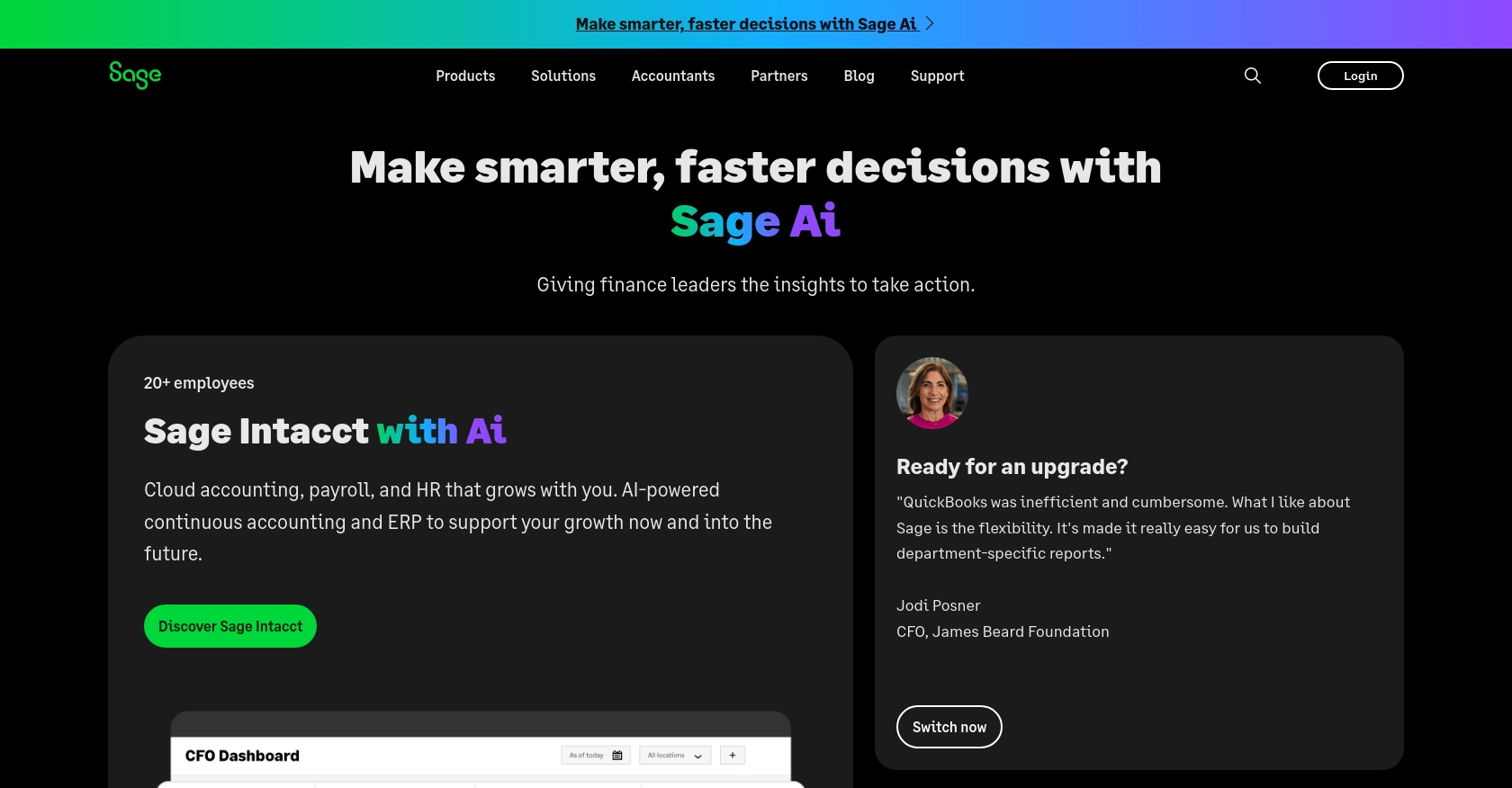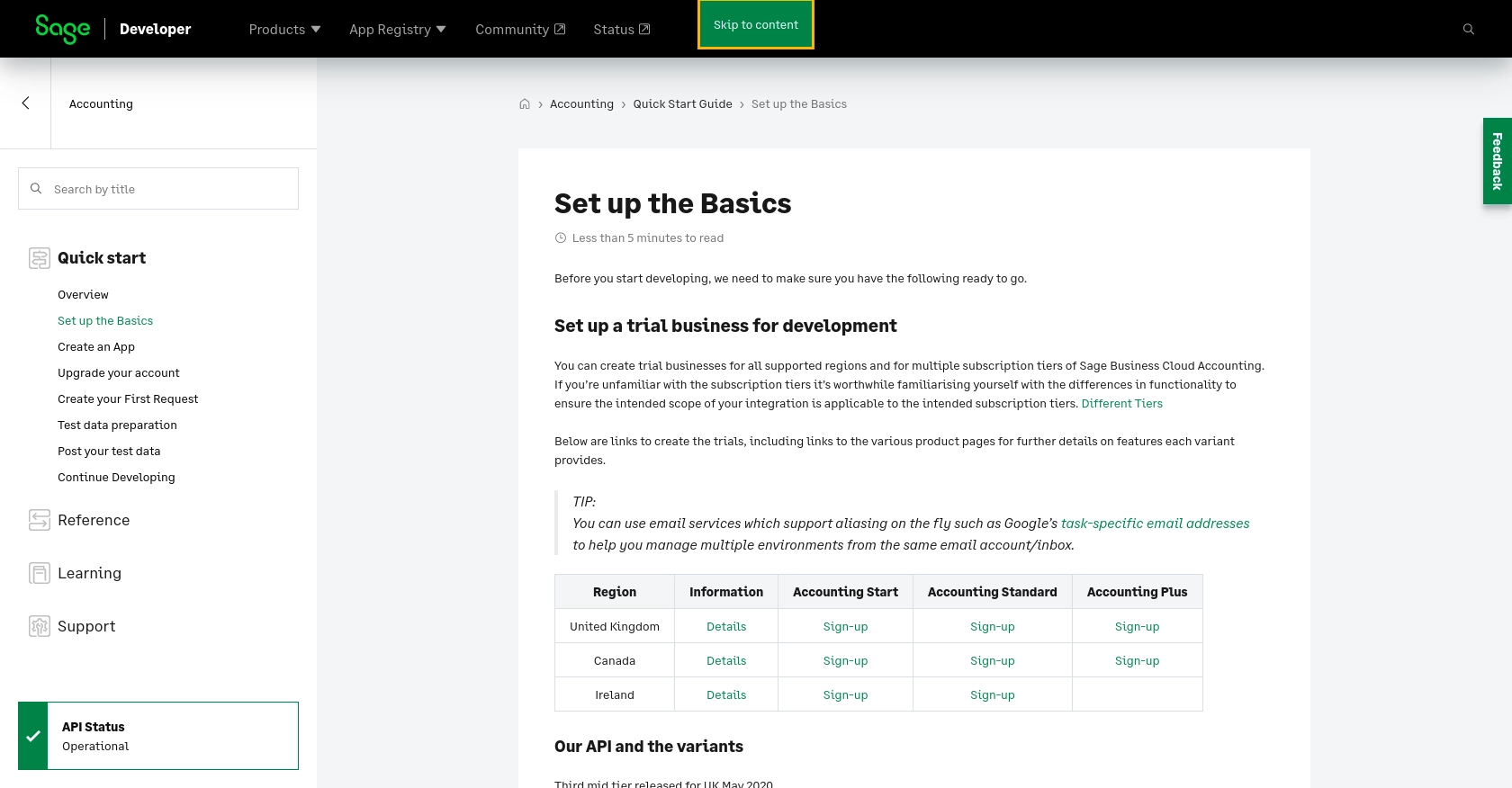Using the Sage Accounting API to Get Acounts (with Python examples)

Introduction to Sage Accounting API
Sage Accounting is a robust cloud-based accounting solution tailored for small to medium-sized businesses. It offers a comprehensive suite of tools to manage financial operations, including invoicing, expense tracking, and financial reporting. Sage Accounting's flexibility and scalability make it a preferred choice for businesses seeking to streamline their accounting processes.
Integrating with the Sage Accounting API allows developers to automate and enhance financial workflows. For example, a developer might use the API to retrieve account information, enabling seamless synchronization of financial data between Sage Accounting and other business applications. This integration can significantly reduce manual data entry and improve the accuracy of financial records.
Setting Up Your Sage Accounting Test/Sandbox Account
Before you can start integrating with the Sage Accounting API, you need to set up a test or sandbox account. This account will allow you to safely develop and test your integration without affecting live data.
Create a Sage Developer Account
To begin, you'll need a Sage Developer Account. This account will enable you to register and manage your applications, obtain client credentials, and specify key details such as callback URLs.
- Visit the Sage Developer Portal.
- Sign up using your GitHub account or an email address.
- Follow the guide on how to sign up for a developer account.
Register a Trial Business Account
Next, create a trial business account for development purposes. Sage offers trial accounts for various regions and subscription tiers, allowing you to test different functionalities.
- Visit the trial account setup page.
- Select your region and preferred subscription tier.
- Sign up for the trial account using your email address.
Create a Sage Accounting App
Once your trial account is set up, you need to create an app to interact with the Sage Accounting API. This will provide you with the necessary credentials for OAuth authentication.
- Log in to your Sage Developer Account.
- Navigate to the Create an App section.
- Click on "Create App" and fill in the required details, including the app name and callback URL.
- Save your app to generate a Client ID and Client Secret.
Upgrade to a Developer Account
To fully utilize the Sage Accounting API, upgrade your trial account to a developer account. This upgrade provides extended access for testing your integration.
- Submit a request through the upgrade form.
- Provide your trial account details, including your name, email, app name, and Client ID.
- Wait for confirmation from the Sage team, which typically takes 3-5 working days.
With your Sage Developer and trial business accounts set up, and your app created, you're ready to start integrating with the Sage Accounting API using OAuth authentication.

sbb-itb-96038d7
Making API Calls to Retrieve Accounts from Sage Accounting Using Python
To interact with the Sage Accounting API and retrieve account information, you'll need to make authenticated API calls using Python. This section will guide you through the necessary steps, including setting up your environment, writing the code, and handling potential errors.
Setting Up Your Python Environment for Sage Accounting API
Before making API calls, ensure you have the correct version of Python and necessary dependencies installed. For this tutorial, we'll use Python 3.11.1 and the requests library to handle HTTP requests.
- Ensure Python 3.11.1 is installed on your machine. You can download it from the official Python website.
- Install the
requestslibrary using pip:
pip install requestsWriting Python Code to Retrieve Accounts from Sage Accounting API
With your environment set up, you can now write the Python code to make a GET request to the Sage Accounting API and retrieve account information.
import requests
# Define the API endpoint and headers
endpoint = "https://api.sage.com/accounting/v3.1/ledger_accounts"
headers = {
"Authorization": "Bearer Your_Access_Token",
"Content-Type": "application/json"
}
# Make a GET request to the API
response = requests.get(endpoint, headers=headers)
# Check if the request was successful
if response.status_code == 200:
accounts = response.json()
for account in accounts['ledger_accounts']:
print(f"Account Name: {account['name']}, Account Type: {account['type']}")
else:
print(f"Failed to retrieve accounts: {response.status_code} - {response.text}")
Replace Your_Access_Token with the access token obtained during the OAuth authentication process.
Verifying API Call Success and Handling Errors
After running the code, you should see a list of accounts printed in your terminal. If the request fails, the error message will be displayed with the status code. Common error codes include:
- 401 Unauthorized: Check if your access token is valid and not expired.
- 403 Forbidden: Ensure your app has the necessary permissions to access the endpoint.
- 404 Not Found: Verify the endpoint URL is correct.
For more detailed error handling, refer to the Sage Accounting API documentation.

Conclusion and Best Practices for Using Sage Accounting API with Python
Integrating with the Sage Accounting API using Python can significantly enhance your financial data management by automating processes and reducing manual entry. By following the steps outlined in this guide, you can efficiently retrieve account information and ensure seamless synchronization with other business applications.
Best Practices for Secure and Efficient API Integration
- Securely Store Credentials: Always store your OAuth credentials, such as the Client ID and Client Secret, securely. Avoid hardcoding them in your source code. Use environment variables or secure vaults to manage sensitive information.
- Handle Rate Limiting: Be mindful of the API rate limits to avoid throttling. Implement retry logic with exponential backoff to handle rate limit errors gracefully.
- Data Transformation and Standardization: Ensure that the data retrieved from the Sage Accounting API is transformed and standardized to match your application's data structure. This will facilitate smoother integration and data consistency.
Enhance Your Integration Strategy with Endgrate
While integrating with Sage Accounting API offers numerous benefits, managing multiple integrations can be complex and time-consuming. Endgrate simplifies this process by providing a unified API endpoint that connects to various platforms, including Sage Accounting. By leveraging Endgrate, you can streamline your integration efforts, focus on your core product, and deliver an intuitive integration experience to your customers.
Explore how Endgrate can help you save time and resources by visiting Endgrate today.
Read More
- https://endgrate.com/provider/sage
- https://developer.sage.com/accounting/quick-start/set-up-the-basics/
- https://developer.sage.com/accounting/quick-start/create-an-app/
- https://developer.sage.com/accounting/quick-start/upgrade-your-account/
- https://developer.sage.com/accounting/reference/accounting-setup/#tag/Ledger-Accounts/operation/getLedgerAccounts
Ready to get started?
